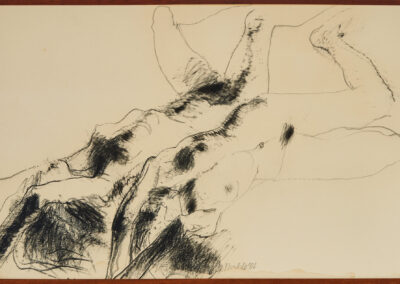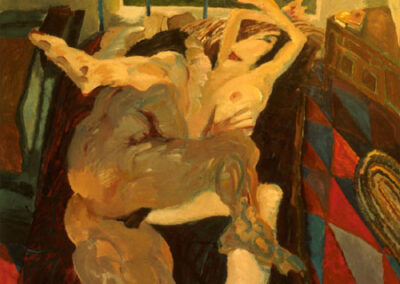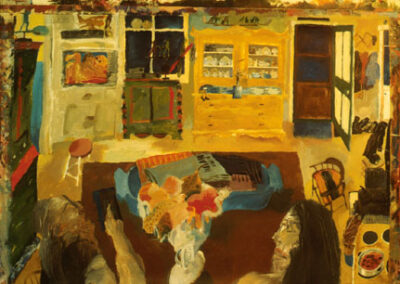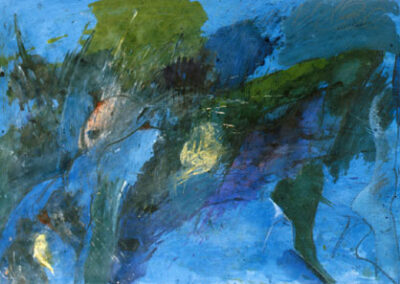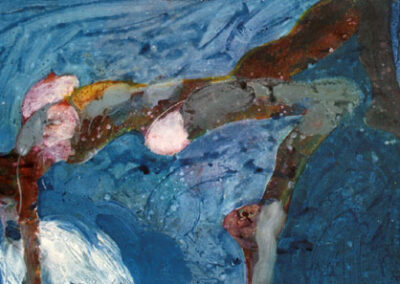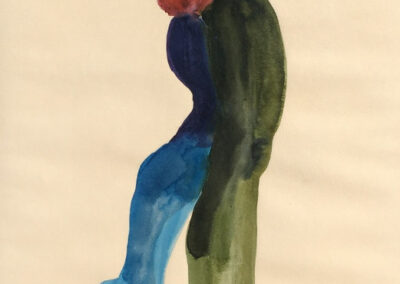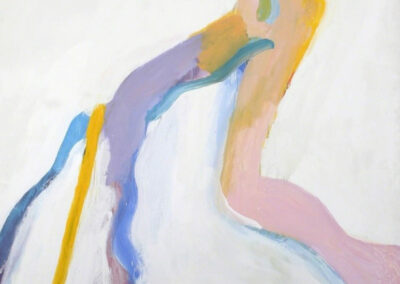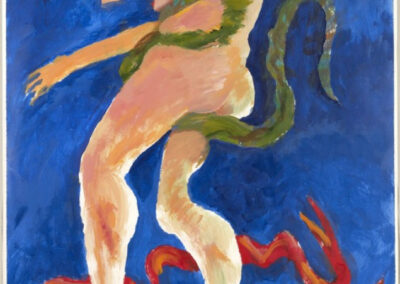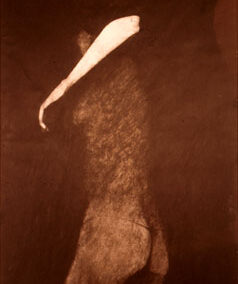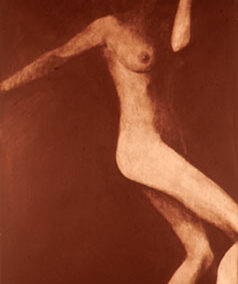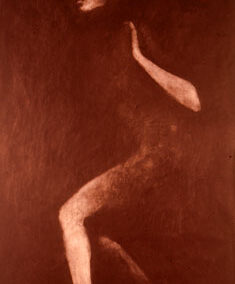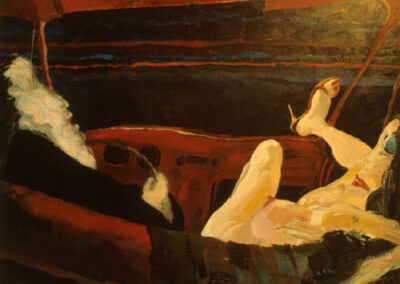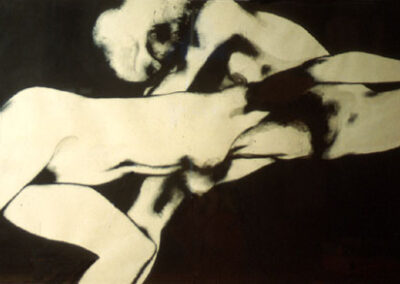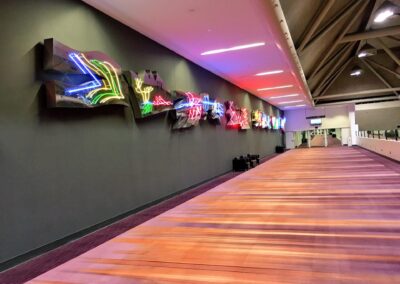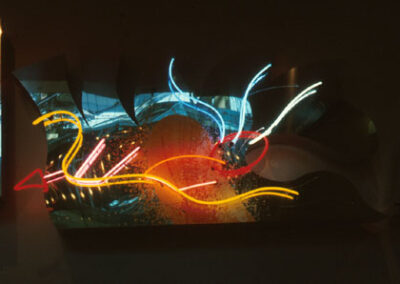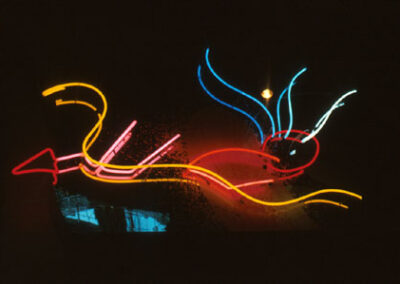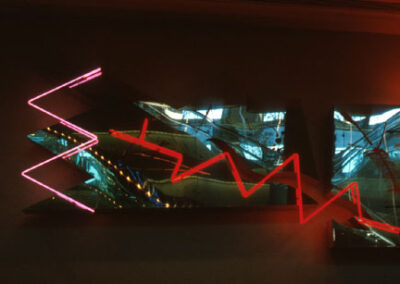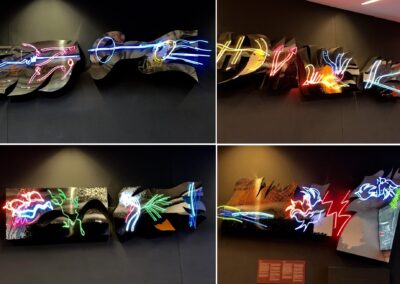Our next Artist You Need To Know is Robert Markle. He was a painter, writer, musician and educator who was born in 1936 in Hamilton, Ontario, and passed away in 1990 in Mount Forest, Ontario. Though Robert Markle was Mohawk, his relationship to his heritage was often complicated and only with his later works, as he grew older, did his Indigenous identity begin to factor into his art. He is best known for his evocative and erotic female nudes (often employing his wife Marlene, or burlesque dancers, as models and inspiration). Although many considered his works “sensual and passionate”, continuing this rich tradition in Western art history, in 1965, following a Toronto police raid of a gallery exhibition of his art, “some of Markle’s drawings were identified as obscene by a judge.” (More about that can be learned here, at the CBC archives). Journalist Robert Fulford described this as “a comedy of mutual incomprehension” which “caused the gallery to close and made Markle famous.” (from here)
-

Red Walk, 1971
-

Drawing for Fallen Figure Series VII, 1964
-

A likeness of Being, 1989
-

The Dish, 1989
-

Warming on an Icy Night, 1980
-

Mohawk Meeting, 1984
Markle was a rebel with (in the words of J.A. Wainwright) “cynical awareness of how his reputation as an artist and teacher connects to what he can do and get away with.” Wainwright also offered that “like his friends Gordon Rayner, Dennis Burton, Harold Town, and Graham Coughtry, Markle was the very embodiment of what big-time male artists in Toronto and elsewhere thought they were supposed to be – macho (to an extent), daring, connected to alternative teaching and exhibition spaces, consumed with jazz and communal boozing, and closely tied to the raffish edges of journalism and the media.”
Markle had his first solo exhibition at the Avrom Isaacs Gallery in Toronto in 1963. He is considered one of the Isaacs Group of artists, which was a space that showcased some of the finest contemporary painters of that generation (the aforementioned Coughtry, but also Michael Snow and Joyce Weiland). Significant exhibitions of his work include a retrospective at the McIntosh Art Gallery at the University of Western Ontario (1968); The Painter and his Model: Markle since ’85 at the Thunder Bay Art Gallery (1989); two major overviews of Markle’s artwork at The Durham Art Gallery (1990 and 2002, respectively); and Blazing Figures: A Retrospective of Robert Markle was at the Gallery de Boer in Owen Sound in 2011.
Markle also completed several large-scale commissions in terms of public art in Ontario, including wall-sculptures for the Ellen Fairclough Building in Hamilton (1981) and the Metro Toronto Convention Centre (c. 1984). He also painted outdoor murals in Mount Forest (1986) and Owen Sound (1987).
Perhaps the most infamous of his exhibitions (after the aforementioned exhibition at the Dorothy Cameron gallery in 1965 that launched his reputation as a controversial but essential artist challenging censorship in the Canadian art world), however, was in 2003. At that time Anna Hudson for the Art Gallery of Ontario organized an exhibition entitled Woman as Goddess: Liberated Nudes by Robert Markle and Joyce Wieland. A review by Sarah Milroy sharply criticized his work and dismissed Markle as “a misogynist” in The Globe and Mail.
-

Burlesque Series: Exit, 1962
-

Burlesque, 1962
-

Burlesque series : Couching, 1962
-

Victory series III, 1976
-

Country Twang, 1989
-

Lovers II, 1963
Markle`s work can be found in the collections of the National Gallery of Canada, the Art Gallery of Ontario, and the Philadelphia Museum. There is also a significant archive of his work, writing, correspondence and other related ephemera about the artist in the Edward P. Taylor Library & Archives at the Art Gallery of Ontario. Additionally, there’s a J.A. Wainwright – Robert Markle collection at the AGO as well. Wainwright’s book Blazing Figures: A Life of Robert Markle was published in 2010: the “only full-length work written about Robert Markle’s life and career, Blazing Figures is based on Markle’s copious personal notes and numerous interviews with his family, friends, colleagues, and former students.” (from here).
Markle taught at The New School of Art from 1966 (a year after the founding of the school) to 1976. In 1977, he was a founding member of Art’s Sake Inc., an artist-run post-secondary art school in Toronto, where he continued his teaching. Later he would be an instructor at the University of Guelph.
-

Mohawk: Meeting, 1984, at Metro Toronto Convention Centre
-

Mohawk: Meeting, 1984 (detail)
-

Mohawk: Meeting, 1984 (detail)
-

Mohawk: Meeting, 1984 (detail)
-

Mohawk: Meeting, 1984 (detail)
-

Mohawk: Meeting, 1984 ( multiple details)
An engaging documentary about Markle’s life and work can be seen here, as part of Historica Canada’s The Canadians series. In 1972, Don Owen produced a film titled Cowboy and Indian, “a portrait of two friends: Robert Markle, who comes from a family of Mohawk steel workers, and Gordon Rayner, his longtime art associate. Both are Toronto artists and art teachers who also share an interest in jazz. Rayner plays the drums, Markle the electric piano. This film is a study of their lifestyle, their mutual interests and their friendship.” This can be watched here, at the NFB (National Film Board of Canada) site.
Robert Markle died in a car accident in 1990. His vehicle hit a tractor in Mount Forest, Ontario, near the farm that he and his wife shared.

